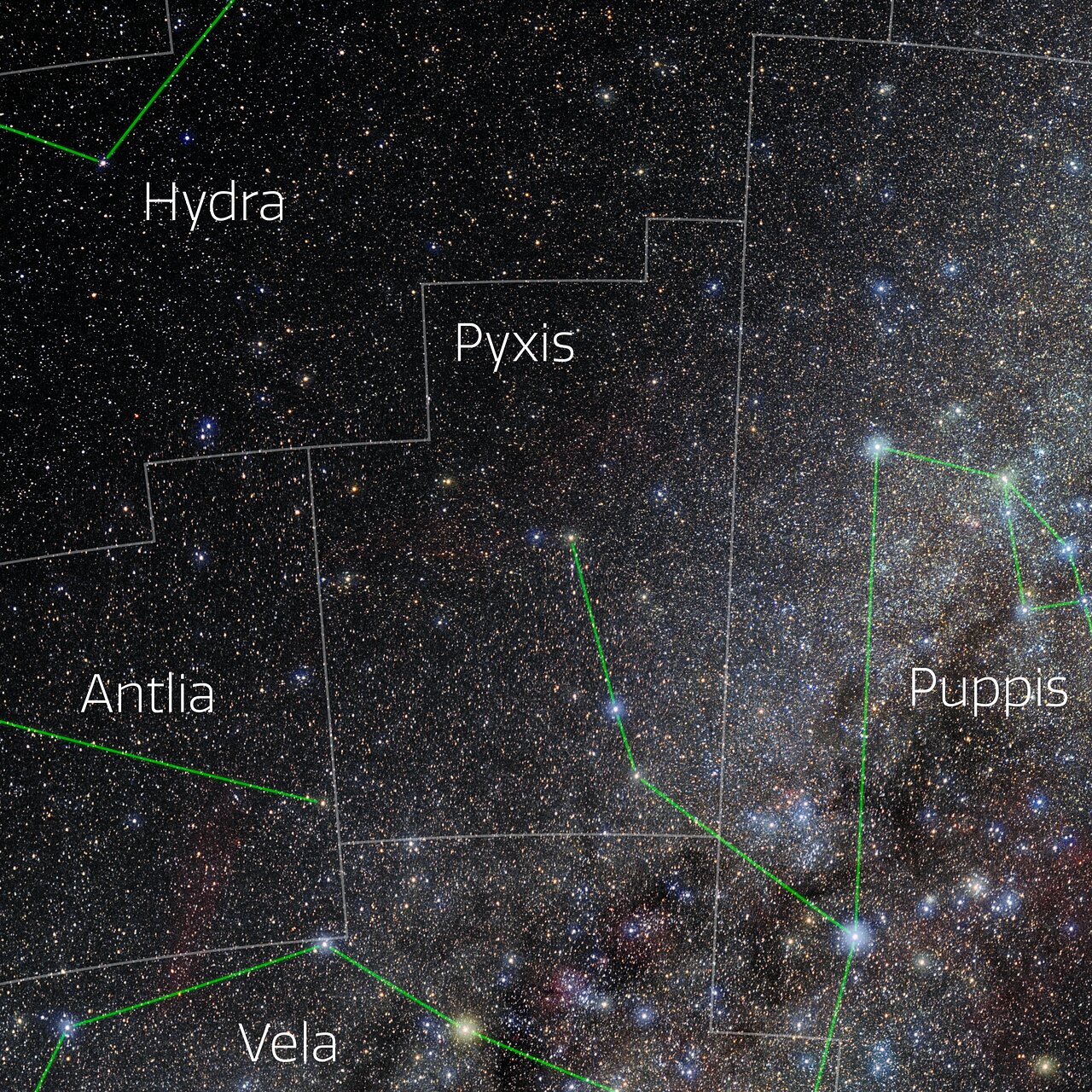Pyxis
Origin
The stars of Pyxis were known in antiquity, those days forming the mast of the Ship, Argo Navis, that was not depicted with sails. After the extension of Argo by Dutch sailors in the 1590s, the body of the ship was considered larger, further south, and a sail was introduced, leaving the stars of Pyxis without any function. The French astronomer Nicholas Lacaillein the eighteenth century considered them as a separate constellation named The Mariner’s Compass (Pyxis).
Lacaille sought to fill gaps in the southern sky's constellation chart, and Pyxis was one of the 14 new constellations he delineated. It is named after the compass used by mariners for navigation, symbolizing the importance of accurate navigation in exploration and discovery during the Age of Enlightenment. While not steeped in ancient mythology like many other constellations, Pyxis remains a tribute to the practical and scientific pursuits of the Enlightenment era.
Bright Stars
Pyxis is a relatively faint and inconspicuous constellation, and it doesn't contain any particularly bright stars. The constellation's stars are generally dim and not well known. The brightest stars in Pyxis are typically around the 4th or 5th magnitude, which makes them challenging to spot without a telescope or in areas with significant light pollution


 Photo of the constellation Pyxis produced by NOIRLab in collaboration with Eckhard Slawik, a German astrophotographer.
The annotations are from a standardized set of 88 western IAU constellations and stick figures from Sky & Telescope. Please find here a non-annotated version of the image.
Photo of the constellation Pyxis produced by NOIRLab in collaboration with Eckhard Slawik, a German astrophotographer.
The annotations are from a standardized set of 88 western IAU constellations and stick figures from Sky & Telescope. Please find here a non-annotated version of the image.
Credit: E. Slawik/NOIRLab/NSF/AURA/M. Zamani
Notable Objects
Some notable objects in Pyxis:
NGC 2613 (the Silverado Galaxy): NGC 2613 is a barred spiral galaxy. It's a relatively bright galaxy and can be observed with a small telescope. Its nickname, theSilverado Galaxy, comes from its appearance in long-exposure photographs, which reveal its striking spiral structure.
NGC 2818: This spiral galaxy is a challenging target for small telescopes because of its faintness but it can be observed under dark skies.
NGC 2613 Group: This galaxy group includes several faint galaxies in close proximity. Observing these galaxies may require a larger telescope, but the challenge can be rewarding for experienced amateur astronomers.



